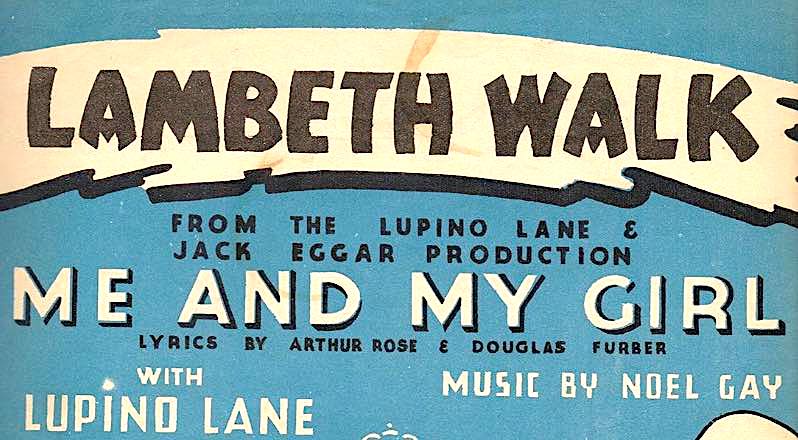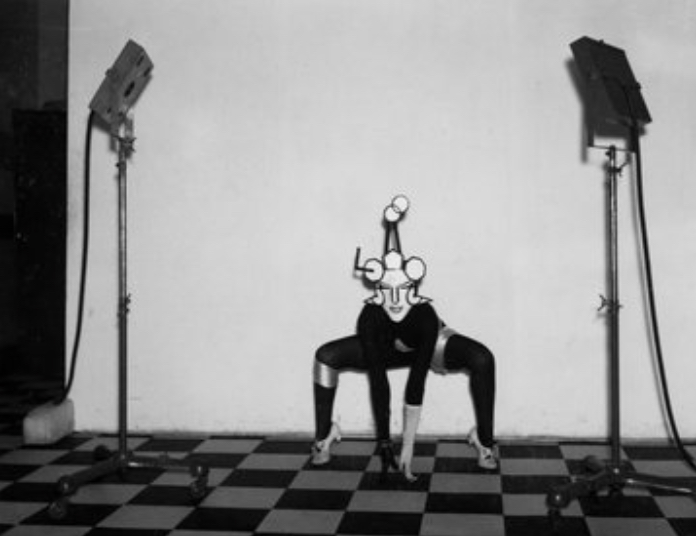5th November 2025

John Wyver writes: The high definition television service from Alexandra Palace was just three days old on Bonfire Night 1936. That afternoon, after a performance under the name of the Mercury Ballet of Marie Rambert’s dance company, the film documentary made to mark the opening of the AP television station was broadcast for the second time.
The 18-minute Television Comes to London had been broadcast at the start of the week, and it was to become such a fixture in the early schedules that viewers and commentators complained about its ubiquity. It is nonetheless a fascinating document, a not-too-great but still welcome prijnt of which can be accessed here.
read more »
4th November 2025

John Wyver writes: One of the wall-size blow-ups in the NPG’s current Cecil Beaton’s Fashionable World exhibition is one a well-dressed young woman, seen from behind, looking into the wartime ruins of Middle Temple (above). Nearby is a silver gelatin print of image, immaculately mounted and framed, and with an informative caption. The title is ‘Fashion is Indestructible’, with the descriptive addition ‘Elizabeth Cowell in suit by Digby Morton’, and the date is 1941, during the captial’s Blitz.
The presentation is typical of a show that, despite the disappointing corridor-like ground-floor galleries that stress the temporary quality of temporary exhibitions, is mounted with flair and even flamboyance. (Contrast this with the austere line-of-postage-stamps presentation of Tate Britain’s current Lee Miller display.) At the NPG there are gorgeous images, as both vintage prints and striking murals, that are frequently pleasing, often dazzling and always, but always, beautiful.
read more »
3rd November 2025

John Wyver writes: Apologies for the blog’s month-long hiatus and the interruption of the daily ‘OTD in early British television’ posts. The last such post was on 25 September, and since then I have been immersed in a month-long process of proofing and indexing and checking the manuscript of Magic Rays of Light: The Early Years of British Television. All of that is now complete, the book goes to the printers next week, and I can re-boot the blog with renewed energy and focus.
Publication by Bloomsbury and the BFI is still scheduled for 8 January, and January will also see a season of screenings linked to the book at BFI Southbank; more details of that anon. I am also organising an international conference about interwar television in early July, and again I will be returning to that in future posts. Indeed, as we are just two months out from publication, I am going to refine the way that these posts will work from now on.
read more »
26th September 2025

John Wyver writes: The later part of the evening of Monday 26 September 1938 was occupied by a feature programme titled Lambeth Walks Out. This was a kind of history of of the dance known as the ‘Lambeth Walk’, presented by journalist and anthropologist Tom Harrisson and Me and My Girl composer Noel Gay. They introduced a sequence of dances in a broadcast that enjoyed an enhanced reprise in January 1939, and which I wrote about in detail at the link below. Do click through to find out more:
OTD in early British television: 9 January 1939
25th September 2025

John Wyver writes: The evening of Sunday 25 September was mostly taken over by the 2 hour-plus reprise of Luigi Pirandello’s Henry IV, originally produced in March by the innovative producer Dallas Bower. As before, Ernest Milton took the title role, with Cecily Byrne as Marchioness Matilda Spina and Valerie Hobson playing Frida, her daughter.
I wrote a previous post about the production and responses to it, which I am happy to link to here:
OTD in early British television: 22 March 1938
24th September 2025

John Wyver writes: Monday 24 September 1928 was the second day of a week of demonstration transmissions by John Logie Baird’s company for the National Radio Exhibition at Olympia. Radiolympia attendees could step out on a dance floor to tunes from Jack Payne and his BBC Orchestra, but presumably to avoid an intolerable cacophony broadcast demonstrations were not permitted in the hall. As a consequence, manufacturers hired nearby premises to show off the latest systems.
So it was that the first performances for British television of songs and comedy were given at 1 Hammersmith Road, sent by landline and watched on the opposite side of Olympia in a shop in Maclise Road.
read more »
23rd September 2025

John Wyver writes: Over the weekend of Friday 23 and Saturday 24 September 1938, the BBC’s mobile unit made a return visit to Pinewood film studios for three OB broadcasts. Pinewood was the location for the first and most successful of three groups of OBs from London’s film studios a year previously, and this return offered the opportunity not only to attract a little more of the silver screen’s stardust but also to employ the unit’s improved cameras in a nightime interior from the ‘Pinewood Ball’.
Friday afternoon, when a 20-minute broadcast was hosted by Tod Rich, included an appearance by Elizabeth Bergner; the shooting of a test for So This is London, a comedy being made by 20th Century Fox’s British subsidiary; and shots of the filming of a scene from the drama short Beyond Our Horizon.
read more »
22nd September 2025

John Wyver writes: From time to time it’s worth checking in on the guest list for the magazine series Picture Page, in this case on the evening of Thursday 22 September 1938. The magazine show comprising brief interviews by Leslie Mitchell with a very wide range of guests featured an extraordinary range of the famous and the anonymous, including writers, diplomats, sports persons, screen stars, eccentrics, variety performers, hobbyists and so many others.
Contributors often brought a prop with them, and were mostly spoken with standing in or walking about the studio. They were rigorously prepared for their four minutes or so of fame, and in the early days at least were pretty much expected to learn their answers by heart. Broadcast twice weekly, in both an afternoon and evening edition, Picture Page was the single uncontested studio ‘hit’ of pre-war television, and it returned again in 1946.
read more »
21st September 2025

John Wyver writes: It’s still the weekend, and I still have many pages of my proofs to work on, so here are further links to previous blog posts that I especially enjoyed writing.
OTD in early British television: 10 August 1931
Early television appearances as a dancer of the composer Avril Taylor-Coleridge.
OTD in early British television: 8 January 1937
Burnt Sepia, British television’s first programme featuring exclusively Black artists, headlined by American singer and dancer Eunice Wilson.
OTD in early British television: 31 August 1939
Grace Wyndham Goldie responds to a television appearance by Paul Robeson (above).
20th September 2025

John Wyver writes: It’s the weekend and I’m deep in the page proofs for Magic Rays of Light, and so here are three previous posts from this series for you to explore. Each one reflects an aspect of the modernist culture of the time and its appearance in very varied forms on television.
OTD in early British television: 22 February 1933
Acrobatic dancer Laurie Devine (above) and the impact she made on early British television.
OTD in early British television: 24 July 1938
Dallas Bower’s modern-dress production of Shakespeare’s Julius Caesar.
OTD in early British television: 15 February 1939
The presentation of the Finsbury A.R.P. Plan for structural defence with architect Berthold Lubetkin.









